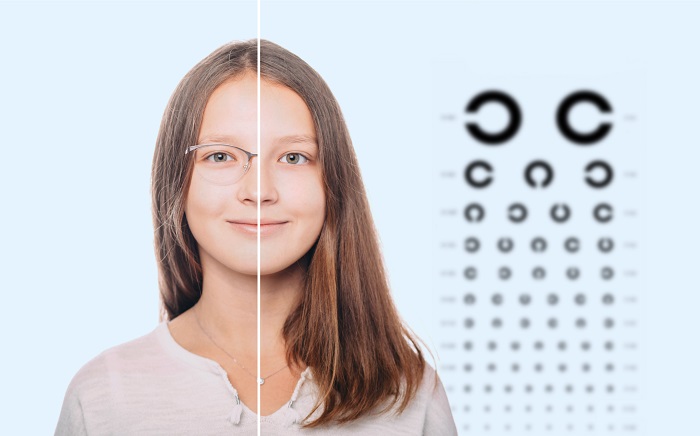Myopia (nearsightedness) is on the rise - both in it's frequency and its severity. It is now considered a common vision problem among children.
Myopia control is quickly becoming the standard of care for eye doctors treating children with myopia.
From the American Academy of Ophthalmology:
“Doctors are looking at ways to slow the progression of myopia in children. While myopia cannot be reversed, the goal of treatment is to keep it from getting worse. This can protect a child’s eye health in the future, despite still needing to wear glasses or contact lenses.”
Myopia: The Basics
Myopia is a topic parents don't hear too much about. So we are going to do our part to share some information, answer a few common questions, and do our best to help parents.
The basics: Myopia = nearsightedness, which is the ability to see things up close more easily than far away.
First off, how common is myopia among children? Here in the U.S. we have seen a steady increase in the prevalence of pediatric myopia over the past 10 years. Not only is pediatric myopia becoming more common, the severity of the condition is worsening. This is not good news. Current studies show 1 in 4 children in the U.S. is nearsighted, with the majority of children being diagnosed between the ages of 3 and 12.
Here's the catch. Identifying myopia is not as simple as asking your child about their vision.
Most children don't know that they don't see well. Children assume they see the world in the same way that everyone else does. Vision screenings (at school or the pediatrician's office) are not as thorough as a professional eye exam with a pediatric eye doctor. Pediatricians and school nurse’s offices do not have the same equipment as a pediatric eye doctor’s office.
You need an expert with the right equipment to diagnose and treat your child if they have myopia, and with myopia on the rise, scheduling an evaluation is more important than ever.

Myopia on the Rise
Genetics alone is not the only culprit where myopia is concerned. While a child with a parent who is near-sighted has a greater risk of developing myopia, there are other factors as well.
Other factors are considered lifestyle or environmental and related to diet, exercise, and time spent outdoors; and affected by the use of electronic devices and up close activities, such as reading.
Why the concern about myopia among children? Undiagnosed or untreated vision problems affect childhood development, learning and academic performance, self-esteem, behavior, high school dropout rates, and juvenile delinquency.
Experts agree that diagnosing and slowing the progression of myopia in children is important.
Children with progressing myopia grow up to become adults with increased risk of glaucoma, cataracts, macular degeneration, and retinal problems – including holes, tears, and detachments.
The key to slowing myopia progression is early detection and treatment. From there, we can engage in myopia control.
Myopia Control
Pediatric eyecare specialists have several methods of engaging in myopia control, which help to safeguard your child from worsening vision conditions. We can diagnose each child’s individual condition and find the best myopia control method for their needs.
Some myopia control methods include:
- Low-dose atropine eye drops: These eye drops, in higher doses, are used to widen pupils during an eye exam. Used in lower doses, these drops can slow the progression of myopia in children. They are generally used at bedtime for children between 5 and 18 years old.
- Peripheral defocus contact lenses: These contacts are multifocal lenses that both correct blurry distance vision and defocus peripheral vision in order to limit myopia. They work for some children from ages 6-12, and are usually helpful for children with worsening myopia or for children whose parents are nearsighted.
- Orthokeratology: Orthokeratology (Ortho-K) is a contact lens a child wears overnight. The contacts flatten the cornea while the child sleeps, allowing light to fall more precisely on the child’s cornea during the day. This can help make distant images appear clearer during the child’s waking hours.
Most pediatric eye doctors also recommend that children spend more time outdoors and limit their screen time on phones, tablets, and computers. Balancing screen time with non-screen time may greatly help protect a child’s vision and limit myopia.
As residency-trained pediatric eye doctors, we are committed to providing the most up-to-date care possible. We are Certified Myopia Management Providers - offering several treatment options.
Myopia control is quickly becoming the standard of care for eye doctors treating children with myopia. If your child is 8 year of age or older, and you're interested in learning more about myopia control for your child's nearsightedness, please call to schedule an appointment.